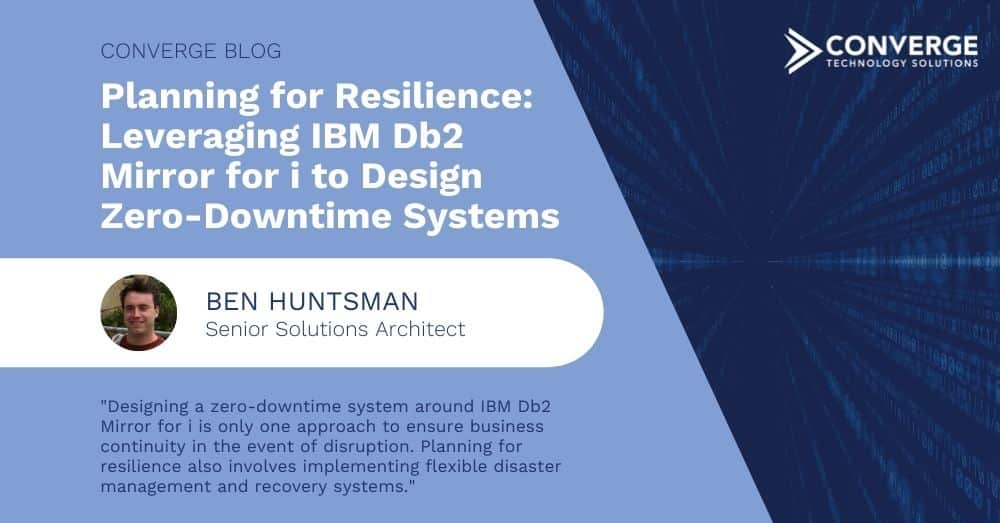Wholesale migrations offer the biggest transformations, but at what risk?
One of the coolest (and often confounding) aspects of technology is that it evolves and improves constantly and quickly. Many eager and ambitious technologists love to push change. It’s often good business: migrating to new technology can make the company more efficient, more profitable, and more competitive. Change can also go horribly wrong and take an organization off the profitable path. Knowing how to migrate to new technologies is full of opportunities and risks.
Oftentimes when organizations embrace new technologies, or even consider embracing new technologies, they are faced with the monumental task of determining strategies for adoption. While new technologies that solve age-old problems can be refreshing, it’s quite another thing to have a fully thought-out approach to implementing the technology.
The urge to go big (i.e., Boiling The Ocean)
In our experience, we’ve seen eager and wide-eyed IT leaders get more excited about the prospect of newness and less interested in a long-term strategy. They see big change as a major win, where they can create an environment in their vision, unconstrained by legacy technology, using the latest and coolest features
This often creates an appetite for large, wholesale migrations where entirely new replacement technology is planned, bought, and built with the idea of fully retiring the legacy system that was previously doing the job. The migration reinvents everything under its scope and often calls for massive capital expenditure, a multitude of resources in addition to extended development/implementation timeframes.
This wholesale migration approach is pejoratively known as “Boiling The Ocean” by battle-hardened technologists who have had to deal with the major and minor catastrophes resulting from this approach. When organizations embark on substantial IT change, they are dealing with substantial legacy footprints. When wholesale migrations fail, they can fail hard for many reasons, including:
- Juggling the overlapping periods when legacy and new technologies are cohabitating can be a nightmare as the IT organization and user base struggle to manage both.
- The new technology does not perform as promised, or worse, fails to achieve functions that were previously working.
- The user base is unprepared or unwilling to perform largescale adoption of the new systems, often because of the lack of knowledge, habituation with the old technology, or misconceptions/misunderstanding of the new technology.
- The timeframes and costs are overwhelming.
- Unexpected effects on customers, employees and business processes cause unforeseen business breakdowns.
- Once the largescale migration has begun, making changes to the initial approach can be difficult even in the face of rules changes and changing business dynamics.
“Stake In The Ground” and “Die On The Vine” approaches
An alternative to this wholesale migration approach is to make smaller, incremental migrations that advance a limited scope of change while progressing the overall environment towards a longer-term vision. This is the “Stake In The Ground” approach: limited advancements that prove their value through use and justify further changes when those changes work. These smaller migrations may focus on a spot solution and be built and run in parallel with the legacy technology. The deprecated legacy technology here can now “Die On The Vine” as the newer technology proves its use and users successfully adopt it. This approach has several benefits, including:
- Smaller, limited scope transformations are easier to plan, potential issues can be identified early for contingency planning
- The benefits of the change happen more quickly, and the value of that change can be used as justification for further changes.
- Planning and approaches can more easily respond to and adapt to business dynamics, rule changes, and other changes without causing largescale disruption.
- Less capital investment, fewer resources and shorter timeframes reduce risks if the migration turns out to be a poor fit.
- Introducing smaller changes to users leads to easier adoption in terms of new skills needed, behavior changes and training.
- Fewer stakeholders and decisionmakers need to be involved.
- Timeframe and costs are incremental and easier to manage.
Despite the risks of wholesale migration, it sometimes is still the right approach to take. On the other hand, despite the benefits of the Stake In The Ground approach, it sometimes doesn’t move quickly enough to get the job done. So, which strategy is right for the task at hand?
Take for example, a data integration migration focused on ETL processes for a data warehouse. A Boil The Ocean approach could work if the legacy data integration footprint is 20 ETL jobs that began recently with a non-strategic implementation of a point solution. However, this migration is vastly different if the legacy footprint is 2,000 jobs with a history of subject area deprecation. It would simply not be wise to begin a full migration of 2,000 jobs that are only partially utilized any longer.
It is also worth noting that each of these strategies requires organizational discipline, as each has different timelines and implications to what must be followed while in flight. Both “Boil The Ocean” and “Stake In The Ground” approaches must have well defined boundaries for what will be allowed when modifications are required to something in a deprecated technology. While this may seem to be a contradiction on the surface, it is a stark reality when facing a healthy and evolving business.
Evaluating your strategy
The key to picking the right migration strategy is in careful evaluation and planning of the environment, the risks, and the rewards.. Evaluation and planning attributes should include (but are not limited to):
- How the speed and scope of migration will affect competitiveness, business processes, user experience, and profitability.
- The overall size, timeframe, and rate of change.
- The current performance of the legacy technology (e.g., does it do its job? Is it drastically falling short in critical areas?)
- The expected and demonstrated performance/functionality of the proposed technology (e.g., Has the new technology worked well in other organizations? Is the new technology unproven?)
- Organizational readiness in terms of change management, training, adoption, and organizational redesign (as needed).
- The organization’s ability to make adjustments to the approach mid-stream as new information and/or priorities are revealed.
- The criticality of the legacy system to business performance or continuity (i.e., is the existing system essential to the core of the business?)
- The skills of the existing IT team to understand and deploy the new technology.
- The level of leadership support and endorsement for the migration.
- Costs, resources, and timing to make the migration.
Take the bias out
Wholesale migrations are often advocated for by leaders who are eager and excited for a big change. Which also means they bring a mountain of bias towards choosing the riskier go big approach. To counter this bias, organizations should assign the migration evaluation and planning to a neutral party (either internal or external) who can take an unbiased and analytical look at the benefits and risks of multiple approaches. The neutral party will be more objective and honest in quantifying the relative risks and benefits and may be better at sussing out unforeseen factors.
Migrating technology happens often in a large enterprise and can be exciting. Smart organizations, though, know they have to temper excitement with risk. Big change can equal big wins, but it can also hurt businesses and ruin careers. Careful planning before making big decisions is a good investment, and changing slowly via a Stake In The Ground is very often a sound approach.
Converge’s Advanced Analytics expertise
Learn how to future-proof your business with reliable, in-depth insights. A successful analytics strategy includes a modern data platform, self-service analytics, and future-looking capabilities. Wrapped and enhanced by artificial intelligence (AI) and machine learning, organizations can automate processes, predict behaviors, and transform the client experience. Contact [email protected] today!





